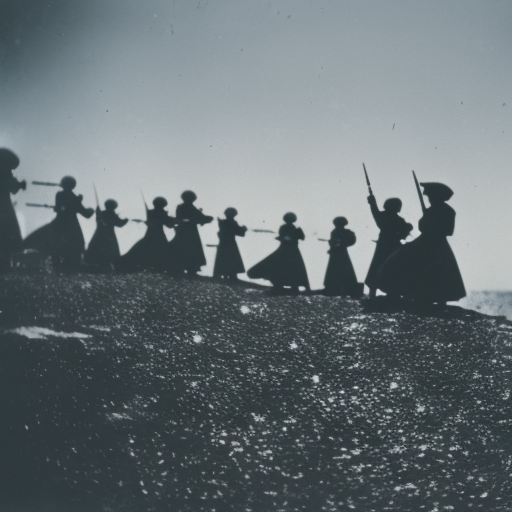Battle of Sinop: A Decisive Naval Encounter in the Crimean War
The Battle of Sinop, which took place on November 30, 1853, was a significant naval engagement during the Crimean War. It pitted the Russian Empire against an Ottoman Empire fleet anchored in the harbor of Sinop, a town located on the Black Sea coast of modern-day Turkey. The battle resulted in a resounding victory for the Russians and had far-reaching consequences for the war.
Background: The Crimean War, fought between 1853 and 1856, was a conflict primarily between the Russian Empire and an alliance of the Ottoman Empire, France, Britain, and Sardinia. The war was sparked by a dispute over the rights of Christian minorities in the Holy Land, which was then part of the Ottoman Empire. The Ottoman Empire declared war on Russia, and the conflict quickly escalated.
Naval Forces: The Ottoman fleet at Sinop consisted of seven ships, including three powerful steam frigates, while the Russian fleet, commanded by Admiral Pavel Nakhimov, comprised of sixteen ships, including five steam-powered ships. The Russian fleet had the advantage of superior firepower and experienced sailors.
The Battle: On the morning of November 30, the Russian fleet approached Sinop and opened fire on the Ottoman ships. The Ottoman fleet, caught off guard, attempted to defend itself but was outmatched by the Russian firepower. The Russian ships, using their superior range, bombarded the Ottoman ships from a distance, inflicting heavy damage.
The Ottoman ships, unable to effectively respond, were quickly disabled and set ablaze. The Russian fleet also launched boats with marines to board and capture the Ottoman vessels. Within a few hours, the battle was over, and the Ottoman fleet had been completely destroyed. The Russians suffered minimal losses, with only a few sailors wounded.
Consequences: The Battle of Sinop had significant consequences for the Crimean War. The destruction of the Ottoman fleet at Sinop shocked the European powers and led to a shift in public opinion. The incident was seen as a clear demonstration of Russian naval superiority and sparked outrage in Britain and France, who saw it as a threat to their interests in the region.
The battle also had a profound impact on the course of the war. The defeat at Sinop prompted the Ottoman Empire to seek assistance from its allies, leading to the intervention of France and Britain in the conflict. This marked a turning point in the war, as the European powers became directly involved and the conflict expanded beyond the borders of the Crimean Peninsula.
Legacy: The Battle of Sinop highlighted the changing nature of naval warfare in the mid-19th century. The use of steam-powered ships and long-range artillery demonstrated the growing importance of technology in naval battles. It also emphasized the need for modernization within the Ottoman Empire, which lagged behind its European counterparts in terms of naval capabilities.
In conclusion, the Battle of Sinop was a decisive naval engagement during the Crimean War. The Russian victory at Sinop had far-reaching consequences, leading to the intervention of France and Britain in the conflict and expanding the war beyond the Crimean Peninsula. The battle also highlighted the changing nature of naval warfare and the need for modernization within the Ottoman Empire.












